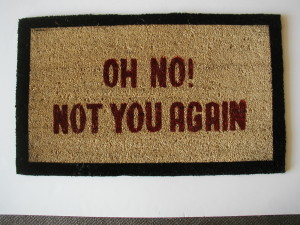By Susan Saldibar
Wouldn’t it be great to hear fewer stories about how terrible occupancy is and a few more about how people have turned it around?
What’s your story? One of woe? Or are you getting back on track? If so, dining probably has a role in it.
I spoke recently with Regan Medzhibzher, VP, Marketing & Communications for Morrison Living, and Rachel Bell, their Director of Communications. (Morrison Living is a Foresight partner.) Both agree that the story senior living communities need to tell is different from a year ago. Dining needs to be central to this; not just in the form of preparing delicious, nutritious meals but delivering them in ways that bring back the critical social component.
Don’t Just Do Amazing Things, Communicate Them
Both Regan and Rachel talked about meeting interested residents where they are in today’s world, both physically and emotionally. And, in some cases, hanging on to some of the pandemic-induced adjustments made during COVID. “For instance, when we went to an in-room service, a lot of residents really liked the comfort and convenience of it,” Rachel says. “These trends and initiatives are still popular, in tune with providing new options.”
They also put some focus on the communications piece to all this. Since everyone sees the dining experience through their own lens, using the full spectrum of media to get the message across is crucial. Dining events, once the go-to method of getting people through the doors, need to be available through a range of options, from virtual to low-contact onsite events, to full onsite events.
Don’t Go Back to Boring
Technology is playing a lasting role as well. “For instance, what we’re finding is that seniors who used to do things like crotchet together; now are comfortable doing it virtually,” Regan says. “They’ve adapted and virtual is here to stay. Programming needs to meet the consumer where they want to be.”
Regan and Rachel continue to be impressed with the creativity they’ve seen, not only from Morrison’s team but also from the onsite staff at their communities. And talk about stories, they have plenty. Here are a couple:
Wesley senior living is using its virtual teaching kitchens to spotlight its chefs and share fun, easy-to-prepare recipes. According to the Wesley marketing team, they had nearly 100 engaged participants in their first streamed Teaching Kitchen (and it is trending up from the 60 they had a while back). So, older folks are not only used to virtual but prefer it, at least in some situations.
The marketing team at The Forum at Rancho San Antonio wanted to get the word out for the opening of 23 new Villas, even though in-person tours were limited. With the help of Morrison Living, they created a “Cruise the Forum”, a self-guided drive-through tour of their new campus. It included six “ports of call” to engage the visitors. Just as an example, at Port #4 “Forum Flavors”, their head chef and food/beverage directors gave visitors samples of their culinary specialties. All this, and no one had to leave their cars.
Is this creativity or what?
There Is Life Beyond Each Event. Market It!
But, Rachel and Regan remind us, just as important as the events themselves is marketing them in ways that meet each prospect where he or she is at any given moment. That means full-on social media, digital marketing, and even direct mail (yes, d/m is hot again).
The idea that marketing is everyone’s job makes even more sense today. “Dining is a big part of your storytelling,” Rachel says. “Make sure everyone is including dining in prospecting. Be prepared to give some examples of menu items, services, or a change in the service style that is being offered to residents. It’s important that you’re addressing each prospect’s comfort level, such as virtual, outdoor, and so on.”
Regan agrees. “With these diversified options we are able to move prospects through the buying journey in a more prescriptive way,” she says. “By offering virtual events we can attract a larger audience. Offering things like drive-by meals and outdoor patio events give communities more opportunities to stay engaged,” she adds. That means “to go boxes”, taste tests, food trucks, and whatever else the marketing team can dream up.
But don’t stop there, Regan warns. “We tend to put blinders on. It’s great to do an event, but it needs life beyond that event. Make sure you are leveraging it with a broader audience. The marketing opportunities are endless.”
Morrison Living has a lot of creative ideas on how their teams are extending the impact of their hospitality and wellness programs through digital and storytelling efforts. You can access it here.
Click here to read comments and join the conversation about this article.








